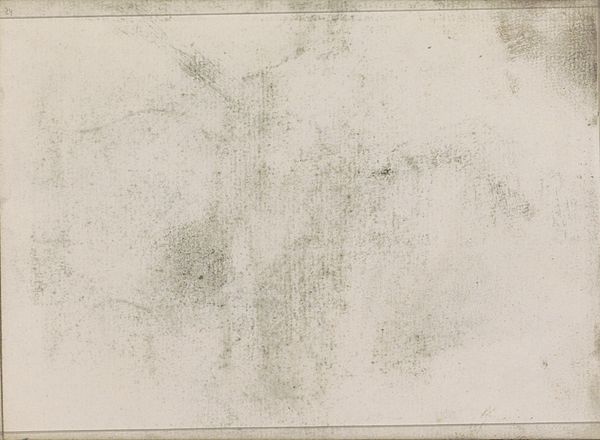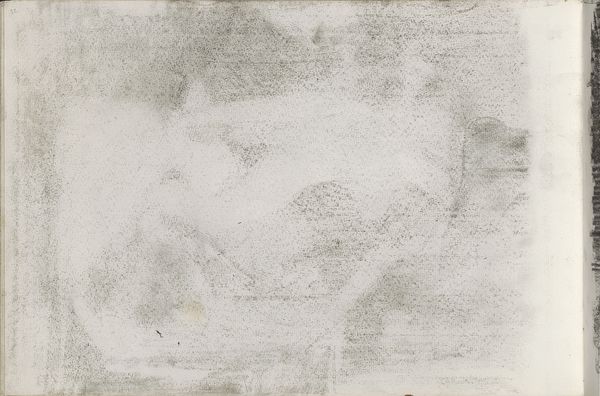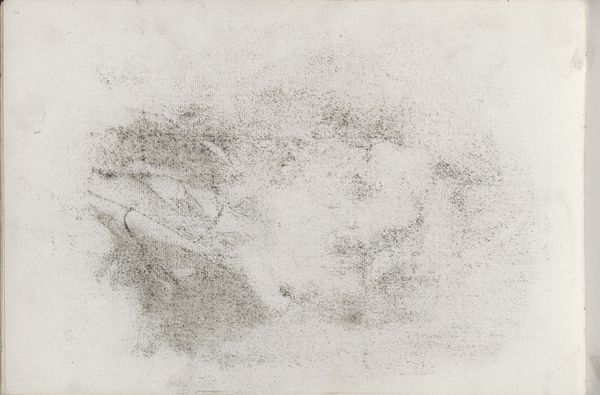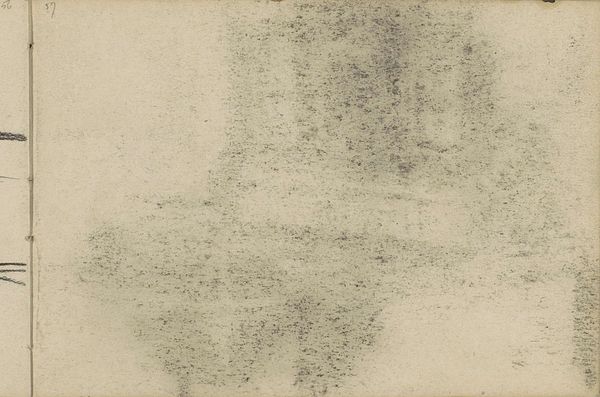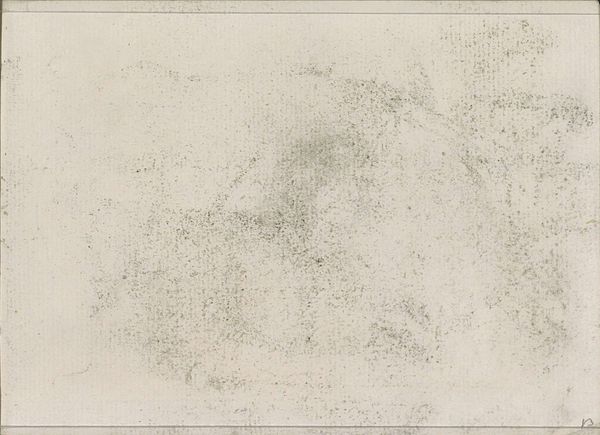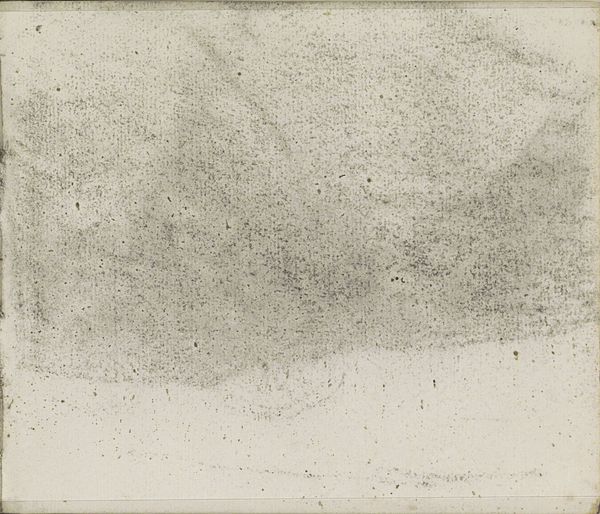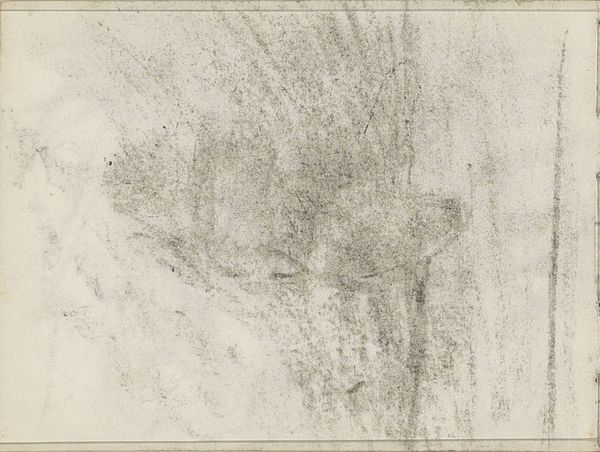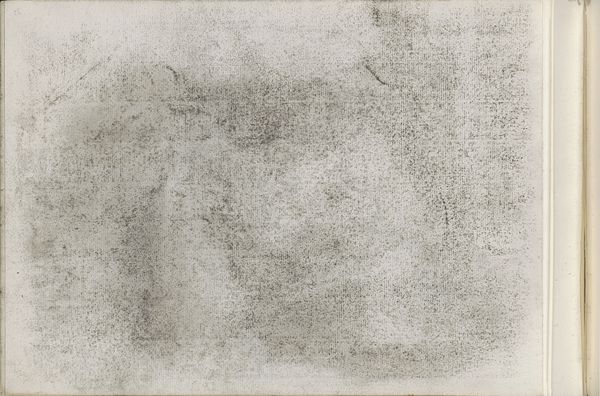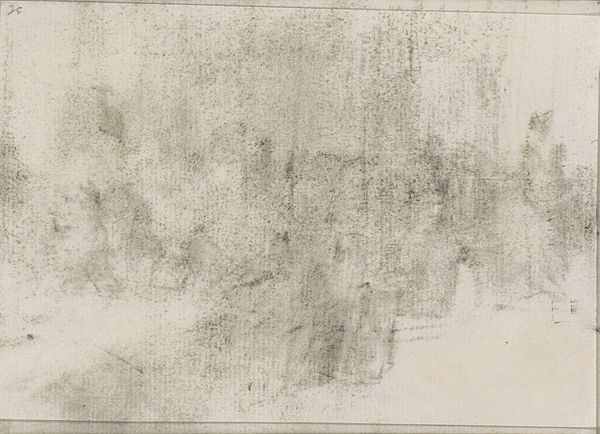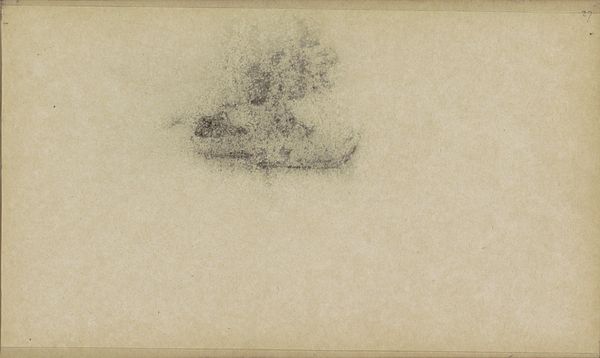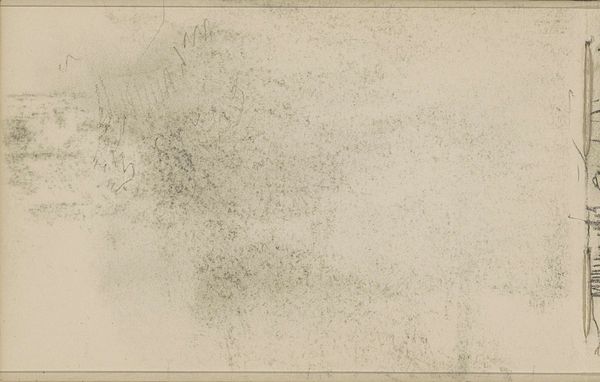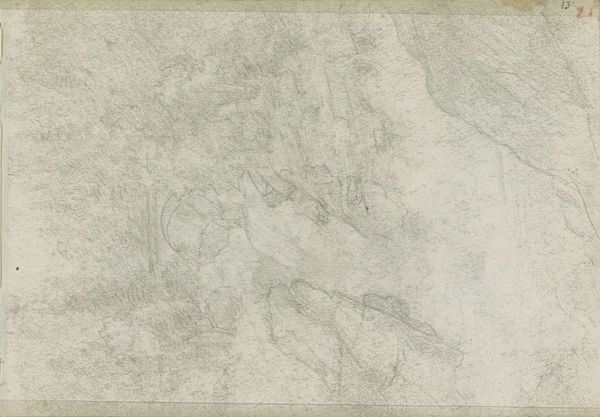
Copyright: Rijks Museum: Open Domain
Editor: So, this is "Abklatsch van de krijttekening op pagina 21 verso," a pencil drawing on paper made sometime between 1892 and 1913. The artist is Bramine Hubrecht, and it's here at the Rijksmuseum. I find it really…ethereal. It almost disappears before your eyes. What do you make of it? Curator: It *is* like catching smoke, isn't it? Bramine was playing with impressions here – literally and figuratively, given the title referring to a copy or 'blot' of a chalk drawing. Think about how memory works: fleeting, fragmented. Perhaps she’s capturing a place more felt than seen. Doesn't it remind you of trying to grasp a dream as you wake up? Editor: Definitely. It’s dreamlike. So it's a copy *of* a drawing. Does that make it less… original? Curator: Ah, but originality is a slippery thing, isn't it? Is a memory truly original? Or just a copy of something we once experienced? This 'copy' is now its own artwork, isn’t it? With its own delicate textures and atmospheric washes of grey. The pencil on paper creates a very different feeling from chalk, I would argue. What if the "mistake" is really the art? Editor: That's interesting. So, by re-drawing, the artist is finding something new, in the accidental marks of the "copy" process? Curator: Precisely. And maybe hinting at how fragile our sense of place really is. What do *you* think it captures of that? Editor: I guess I thought it looked unfinished but maybe that’s the whole point: that nothing is ever truly finished. Thank you for pointing out the nuances that makes the imperfection the key of its success! Curator: Exactly! And that, my dear student, is often where the real magic lies. Art isn’t about perfect replication; it’s about seeing the world with new eyes.
Comments
No comments
Be the first to comment and join the conversation on the ultimate creative platform.
